We visit Emrys Architects' masterful transformation of a canalside London house
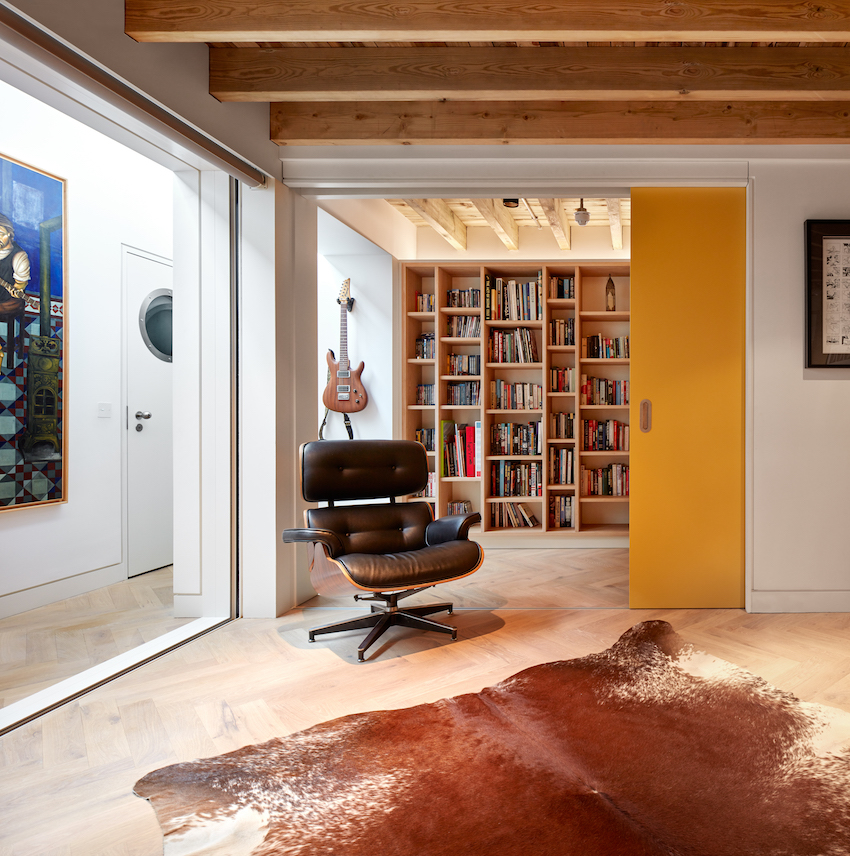
Most of London's handsome townhouses have gone through many different lives; often originally built as majestic, several-storeys high single family houses, but then subdivided into apartments, shops and offices as times and need changed in the ever-evolving British capital. This also pretty much sums up the story of a canalside property that Emrys Architects recently completely transformed from a neglected and fragmented old building, including retail and flats, into two generous and contemporary homes.
Canal House, as its name suggests, sits right on one of London's key waterways, Regents Canal, in north London. When new owners acquired three floors of a four-storey town house with a view to renovate, and their upstairs neighbours swiftly followed suit, appointing the same architects, Emrys found themselves in the fortunate position of having to redesign the whole structure; which helped them to address both structural and design issues in a consistent and holistic way.
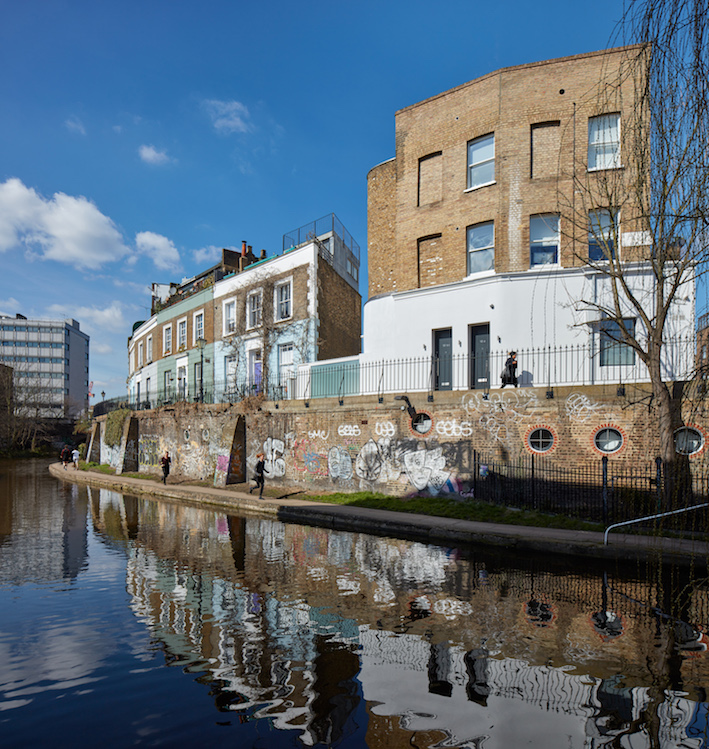
Canal House is a transformed historical waterside property in London, designed by Emrys Architects.
A key priority was allowing plenty of light into the building, and especially the fairly dark basement. This was achieved by placing large glazed openings in key areas – a strip window that overlooks the lower ground floor, a shopfront style facade towards the street, and glass doors that open onto balconies towards the canal. Thecarefully chosen opacity and placement of the glass ensured the owners' privacy was not compromised.
Inside, working with often narrow and awkward spaces, the architects used intelligent spatial arrangement and divisions such as sliding partitions to make the most of the available room. Now, the design reads as a coherent whole, contemporary and warm, featuring bespoke joinery and exposed ceilings. An open-plan living space on the first floor looks out towards the water, celebrating the house's picturesque positioning and characteristic London views
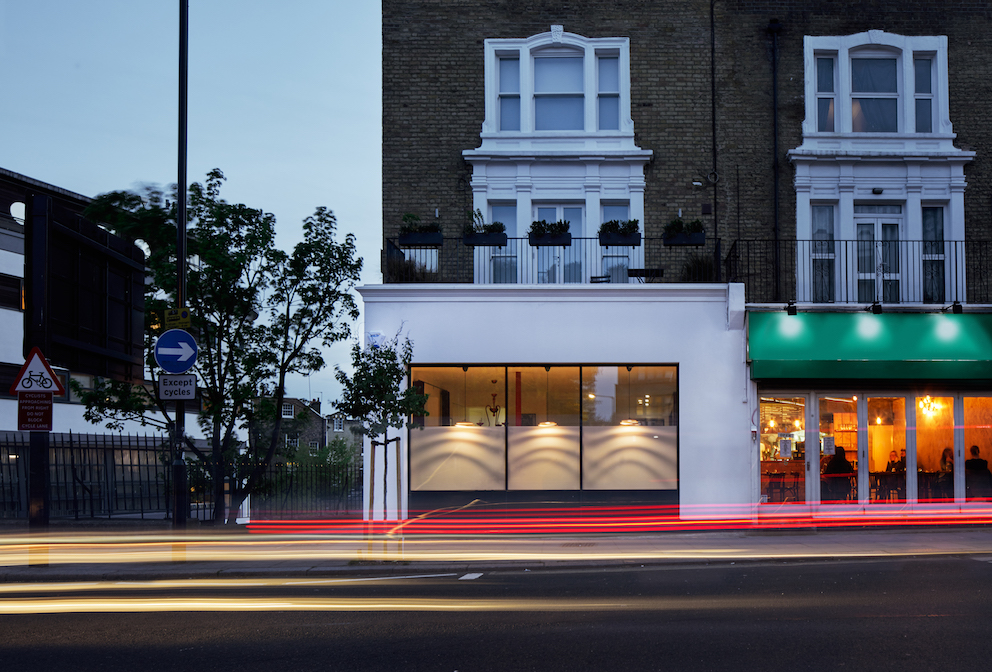
The studio added a large shopfront style window on the ground level to maximise light.
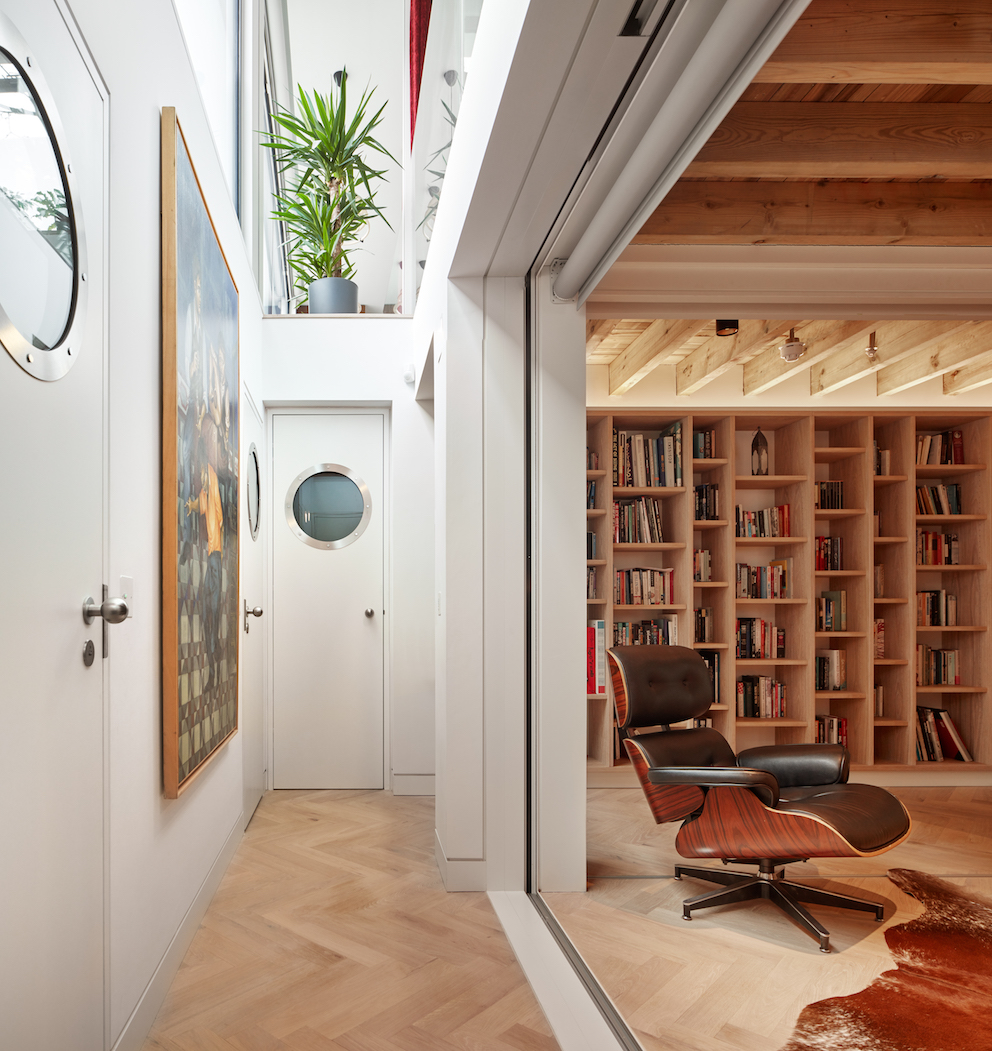
The architects updated and unified the different spaces that were poorly maintained and subdivided by past owners.
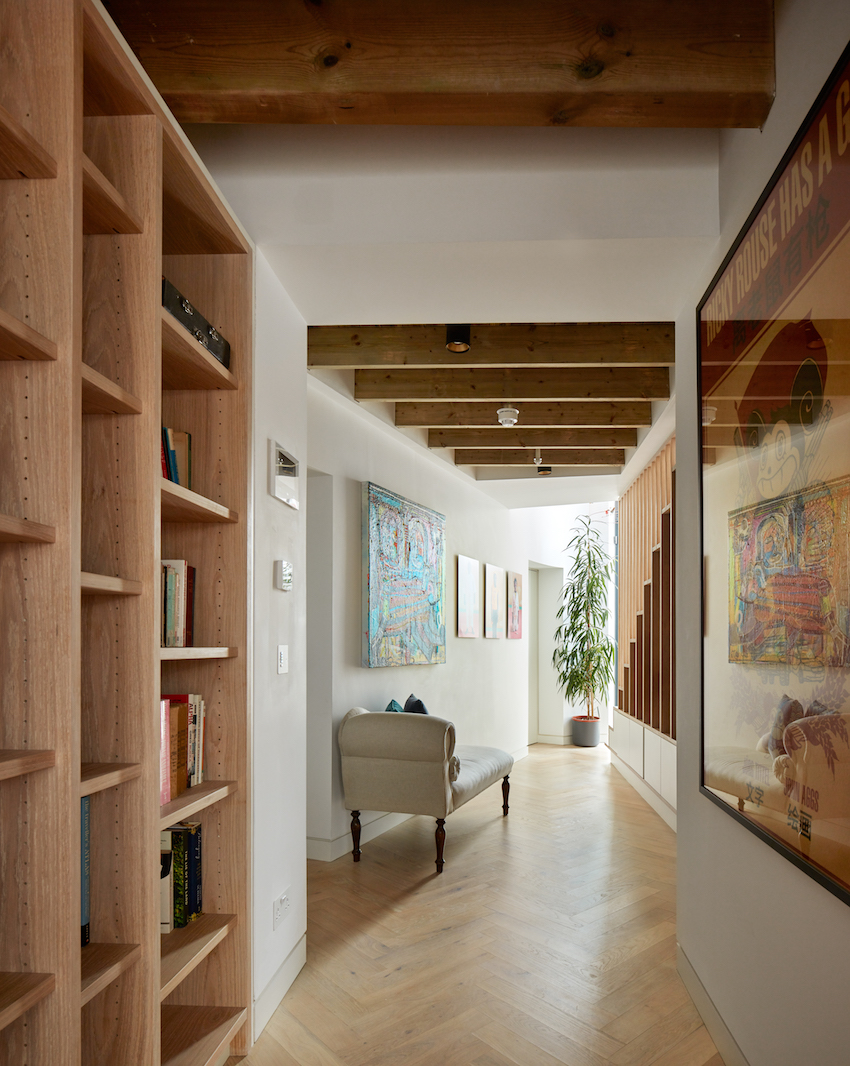
The architects had to work with awkward spaces and lack of natural light but they succesfully updated the structure.
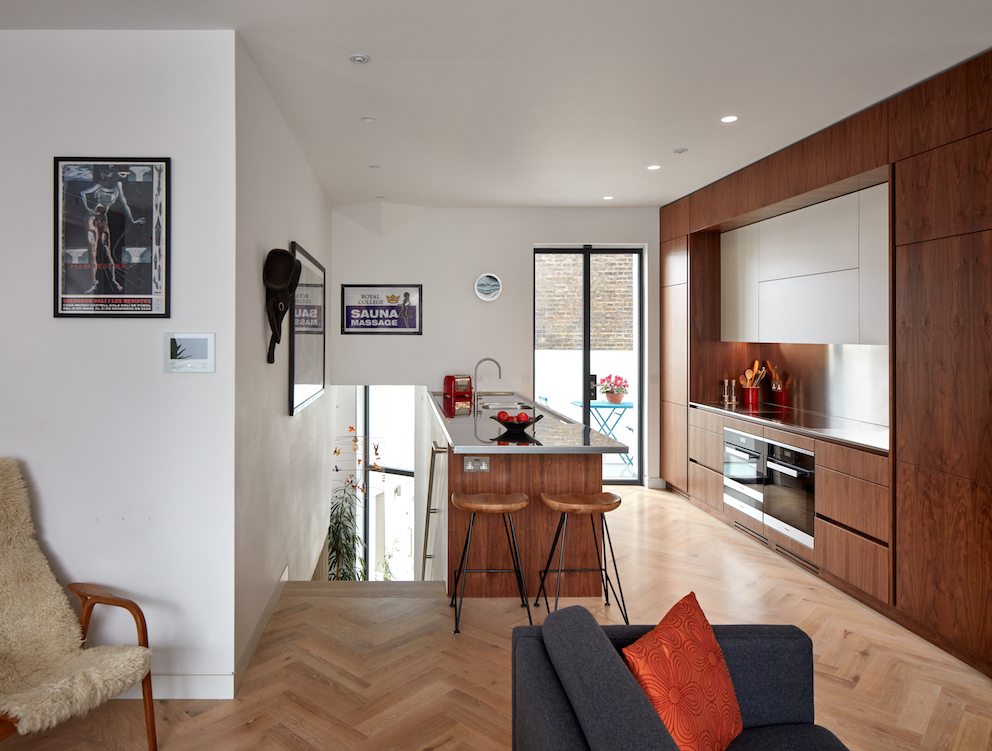
The property comprises of two apartments, one of the three lower levels and one at the top; all of which were redesigned by Emrys.
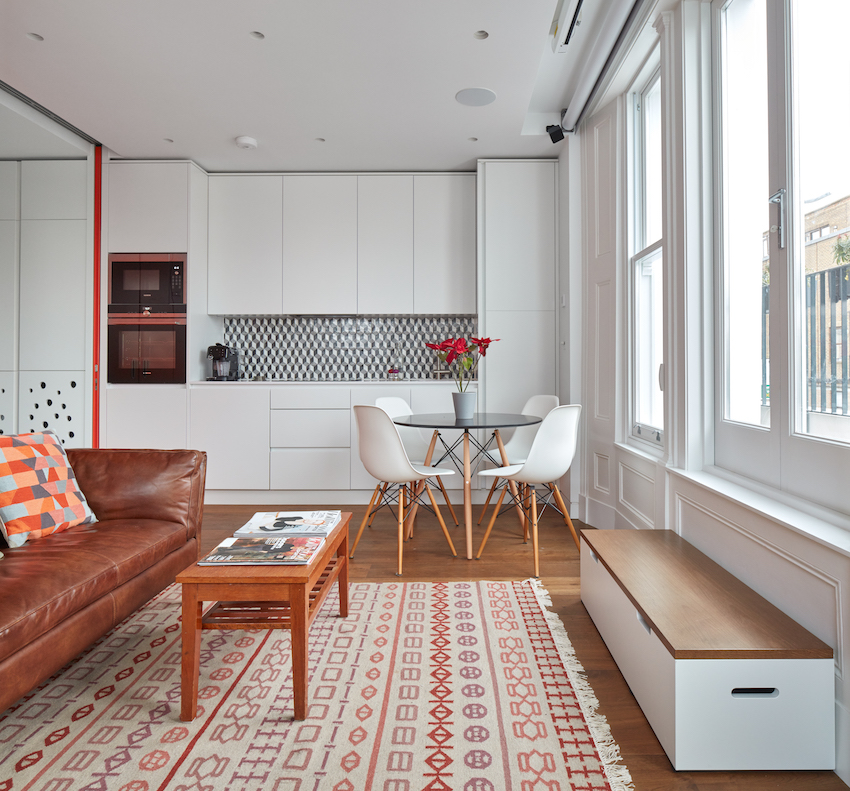
Full sized windows were added towards the canal to allow plenty of sunlight in, while maintaining the owners' privacy.
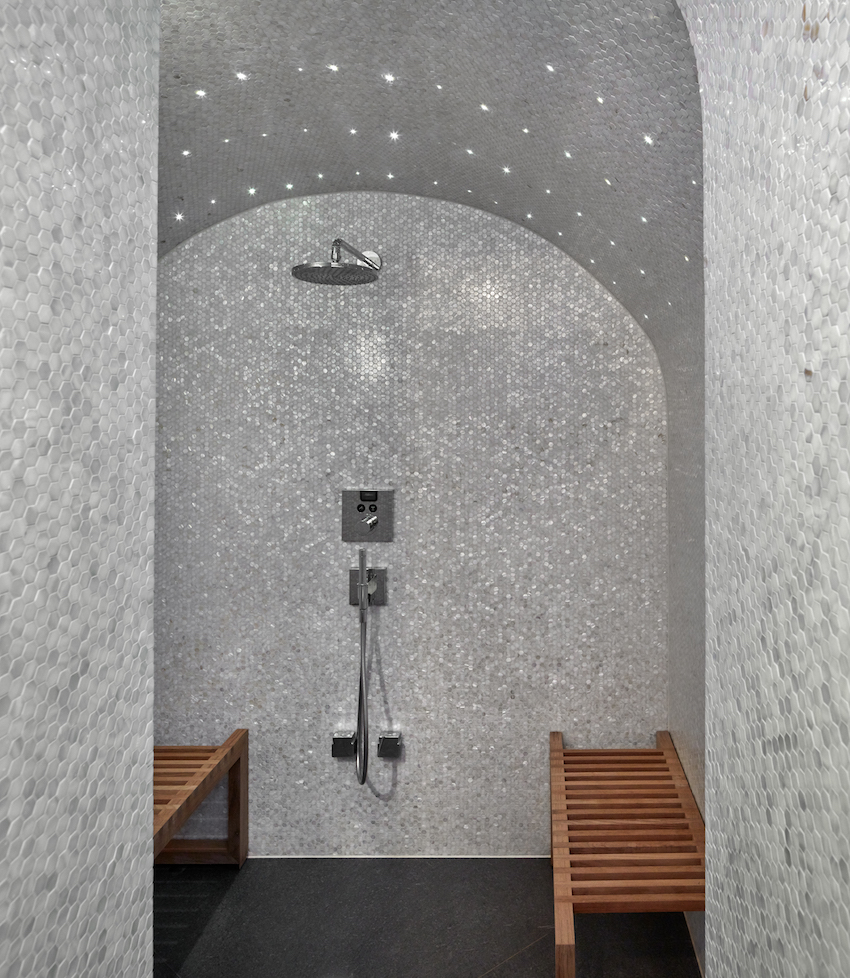
The architects went for a modern, and at places, sculptural design.
INFORMATION
For more information visit the website of Emrys Architects
Receive our daily digest of inspiration, escapism and design stories from around the world direct to your inbox.
Ellie Stathaki is the Architecture & Environment Director at Wallpaper*. She trained as an architect at the Aristotle University of Thessaloniki in Greece and studied architectural history at the Bartlett in London. Now an established journalist, she has been a member of the Wallpaper* team since 2006, visiting buildings across the globe and interviewing leading architects such as Tadao Ando and Rem Koolhaas. Ellie has also taken part in judging panels, moderated events, curated shows and contributed in books, such as The Contemporary House (Thames & Hudson, 2018), Glenn Sestig Architecture Diary (2020) and House London (2022).
-
 ‘Architect of glamour’ Antony Price makes a high-voltage return to the runway with 16Arlington
‘Architect of glamour’ Antony Price makes a high-voltage return to the runway with 16ArlingtonFeaturing a runway debut from Lily Allen, the show saw legendary designer Antony Price – best known for outfitting Roxy Music in the 1980s – unite with 16Arlington’s Marco Capaldo on the sensual after-dark collection
-
 Step back in time with the newly released Analogue 3D gaming console
Step back in time with the newly released Analogue 3D gaming consoleLovers of the Nintendo N64’s pixel-perfect gameplay can now indulge their favourite console classics thanks to masterful hardware of the new Analogue 3D
-
 An around-the-world art tour with Rosewood
An around-the-world art tour with RosewoodFrom London to New York, Amsterdam and São Paulo, the hotel group showcases curated art that reflect the unique local context
-
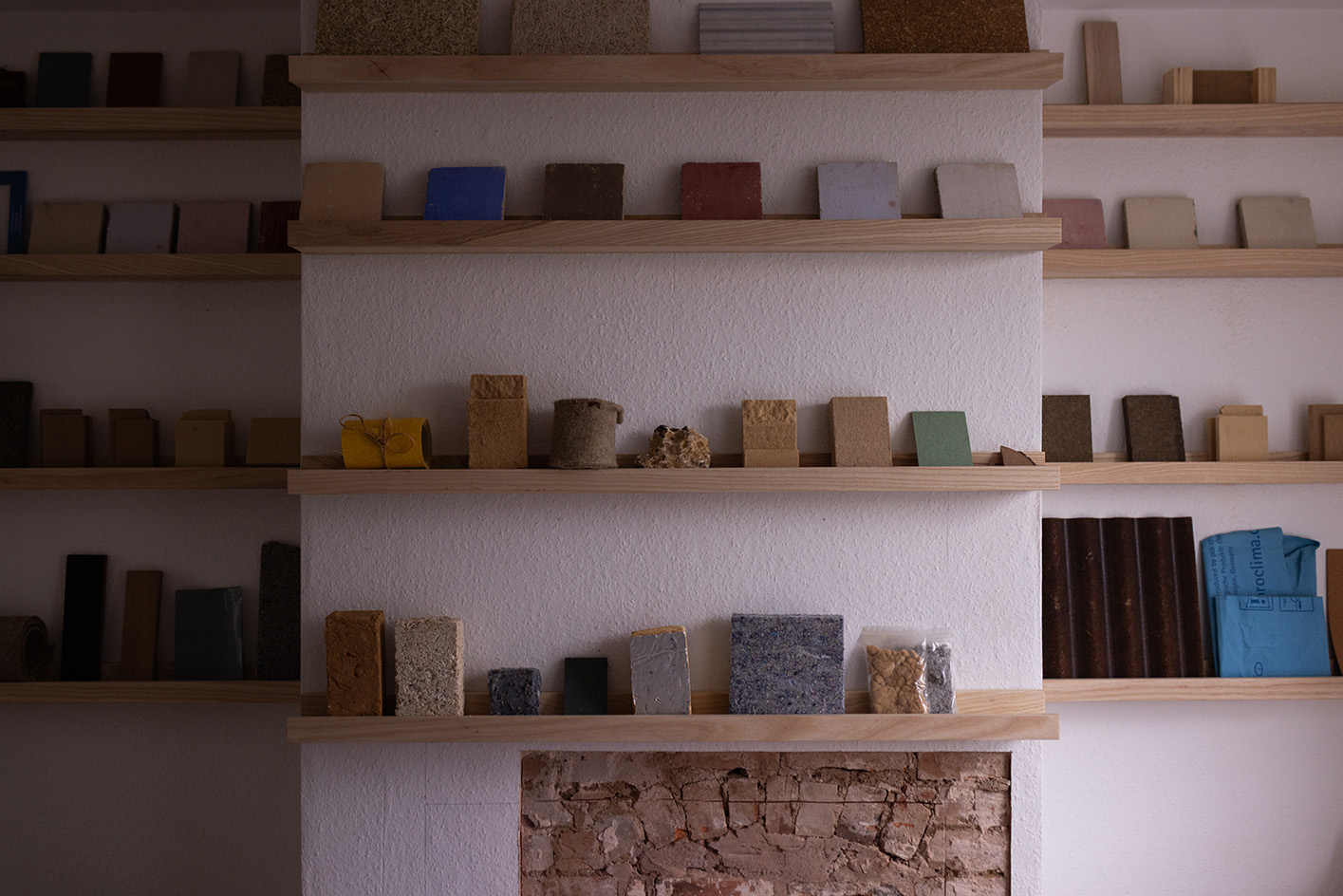 Take a tour of Retrofit House, the live showcase inspiring sustainable homebuilding
Take a tour of Retrofit House, the live showcase inspiring sustainable homebuildingRetrofit House, a showcase for residential redesign using biomaterials and environmentally smart methods, opens in Birmingham, UK, spearheaded by Civic Square, Dark Matter Labs and Material Cultures; we paid it a visit
-
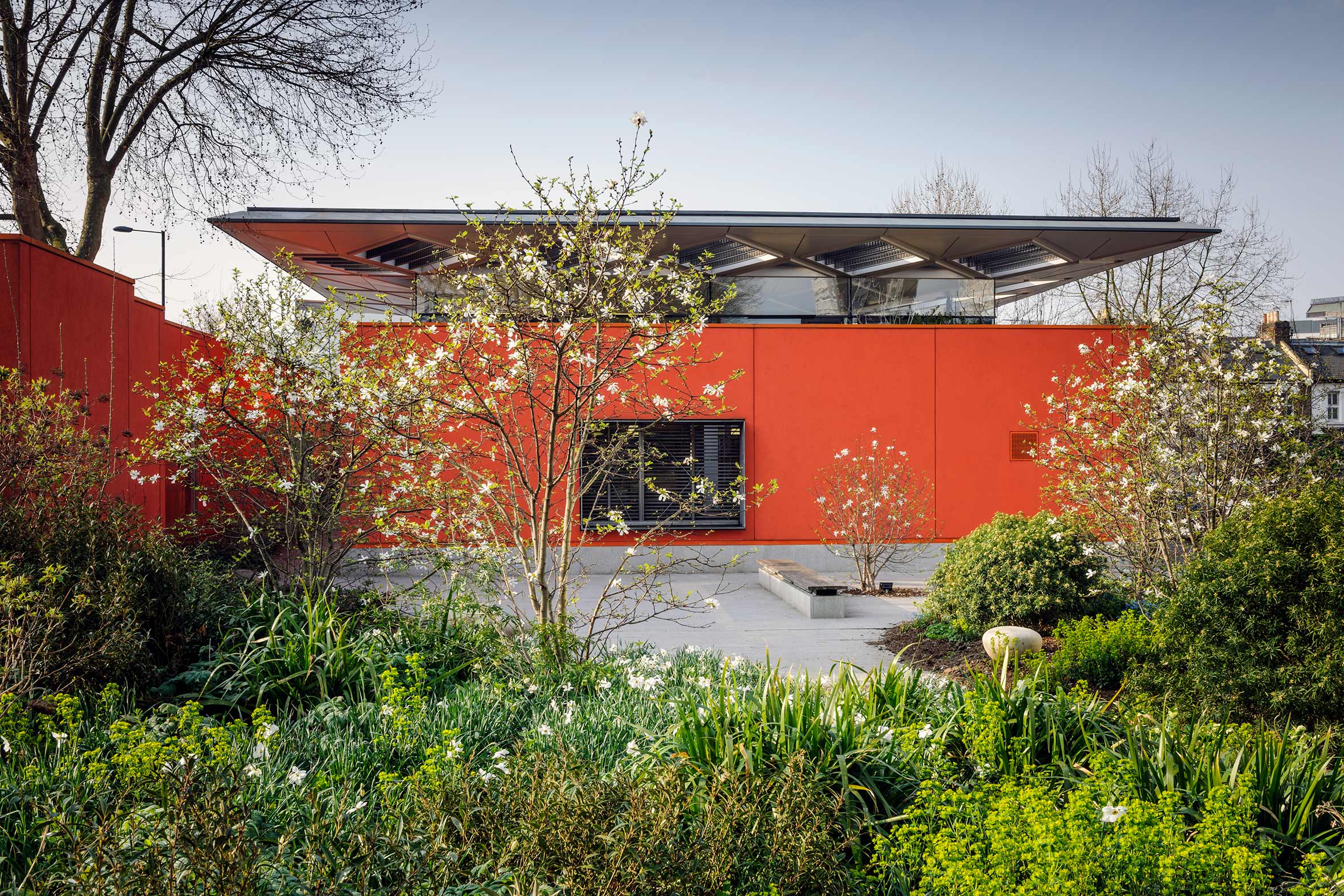 How Maggie’s is redefining cancer care through gardens designed for healing, soothing and liberating
How Maggie’s is redefining cancer care through gardens designed for healing, soothing and liberatingCancer support charity Maggie’s has worked with some of garden design’s most celebrated figures; as it turns 30 next year, advancing upon its goal of ‘30 centres by 30’, we look at the integral role Maggie’s gardens play in nurturing and supporting its users
-
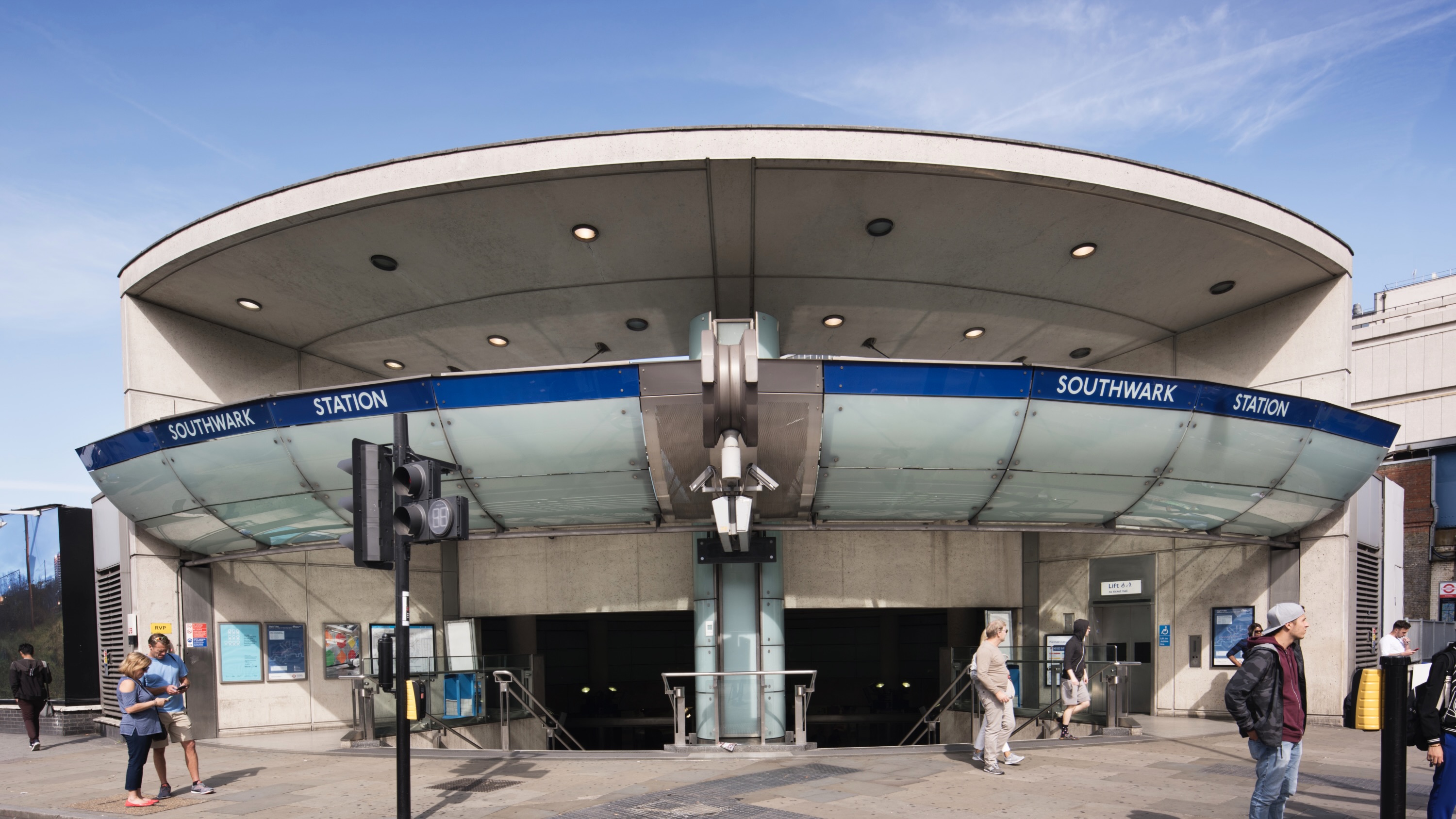 Futuristic-feeling Southwark Tube Station has been granted Grade II-listed status
Futuristic-feeling Southwark Tube Station has been granted Grade II-listed statusCelebrated as an iconic piece of late 20th-century design, the station has been added to England’s National Heritage List
-
 Archiboo Awards 2025 revealed, including prizes for architecture activism and use of AI
Archiboo Awards 2025 revealed, including prizes for architecture activism and use of AIArchiboo Awards 2025 are announced, highlighting Narrative Practice as winners of the Activism in architecture category this year, among several other accolades
-
 Backstage at the Old Vic is all about light, theatre and sustainable action
Backstage at the Old Vic is all about light, theatre and sustainable actionThe theatre's new creative hub by Haworth Tompkins has completed, bringing a distinctly contemporary and colourful addition to the popular theatre space in South London
-
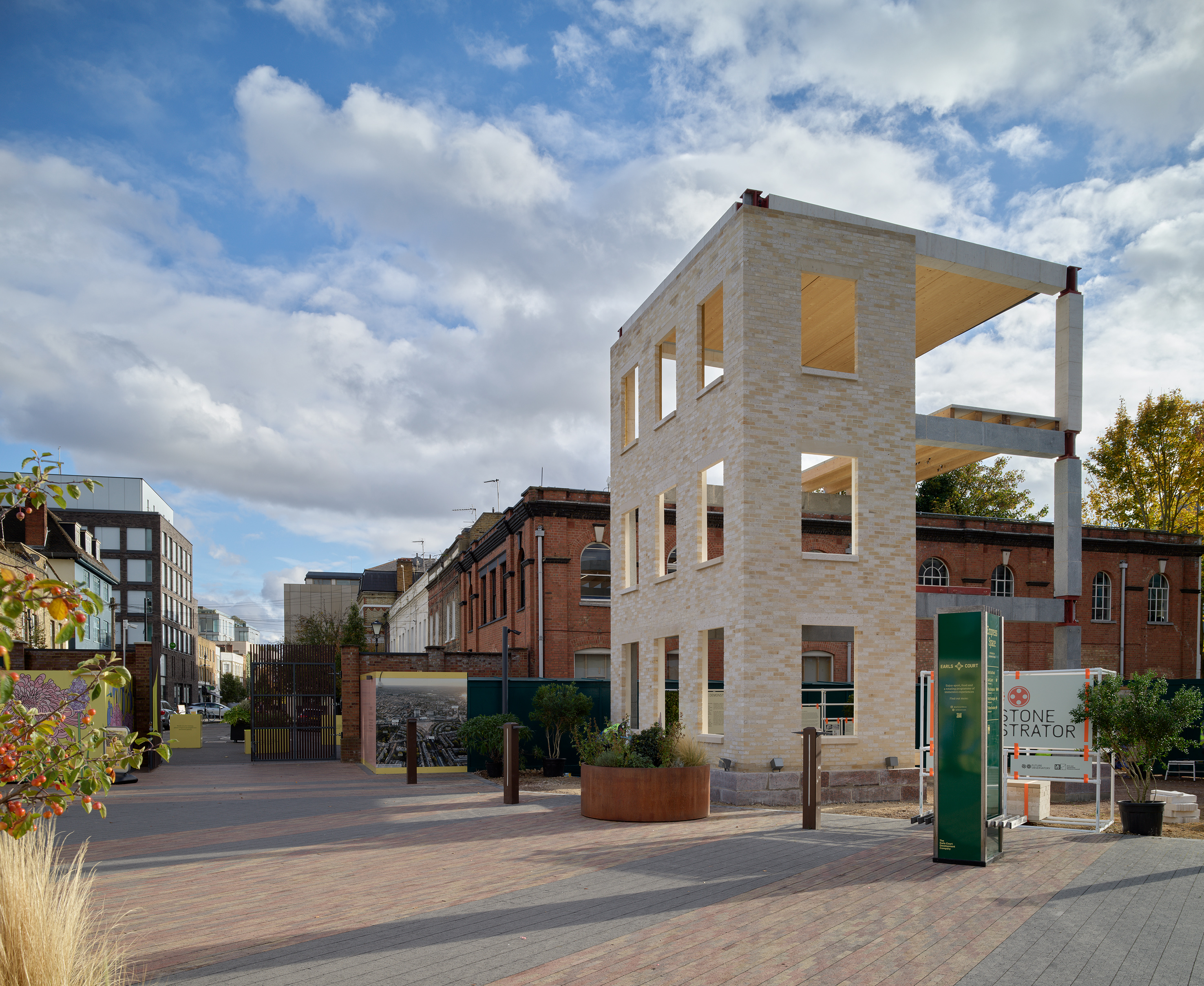 Tempted to try building with stone? This project will convince you of its merits
Tempted to try building with stone? This project will convince you of its meritsWelcome to the Future Observatory's The Stone Demonstrator, a project conceived to show off the material's strong points, now on display in West London
-
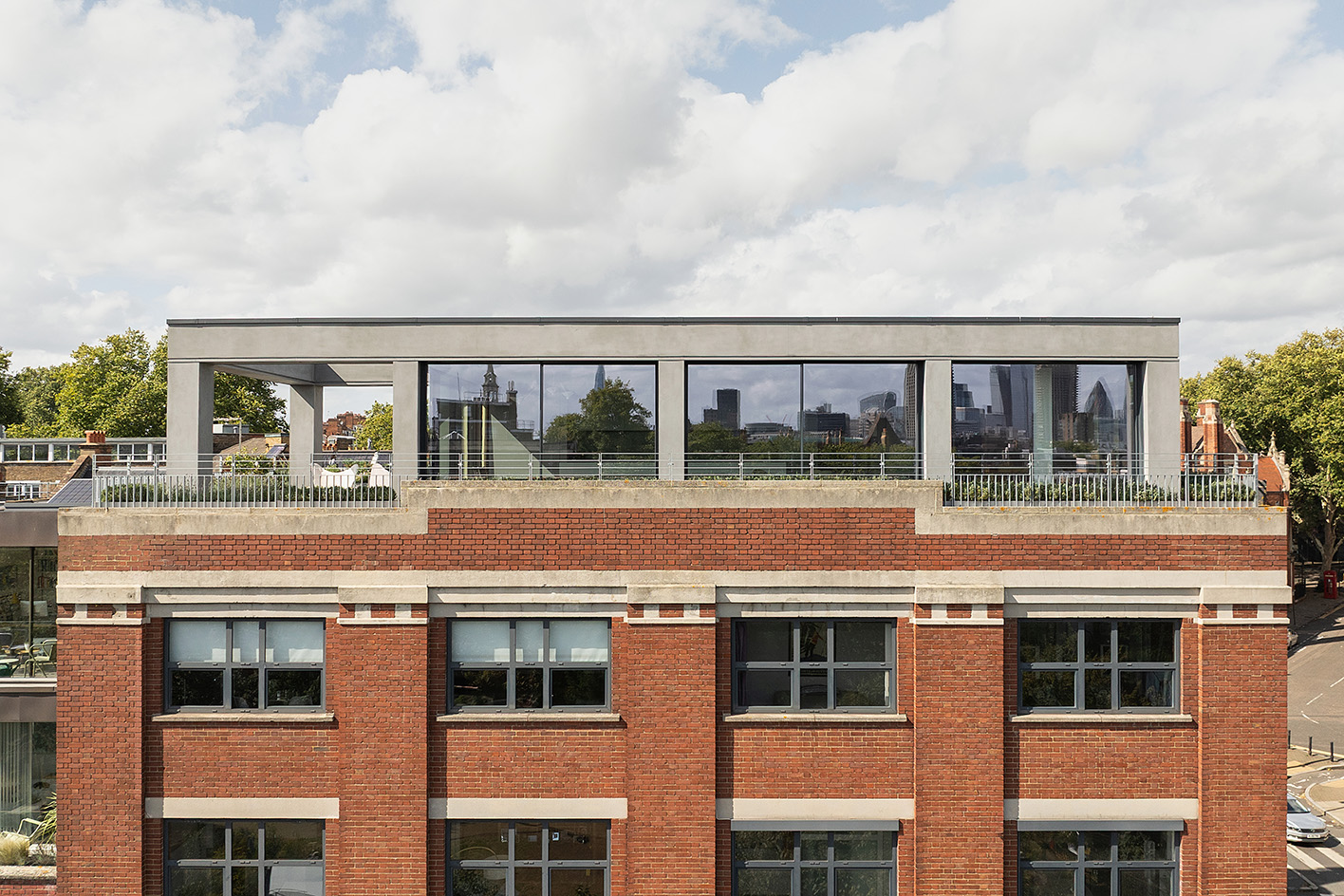 Step inside this Clerkenwell Rooftop, transformed into a minimalist urban abode
Step inside this Clerkenwell Rooftop, transformed into a minimalist urban abodeA Clerkenwell Rooftop has been transformed by Studio Felicity Bell into a minimalist modern home, featuring airy interiors and long views of London
-
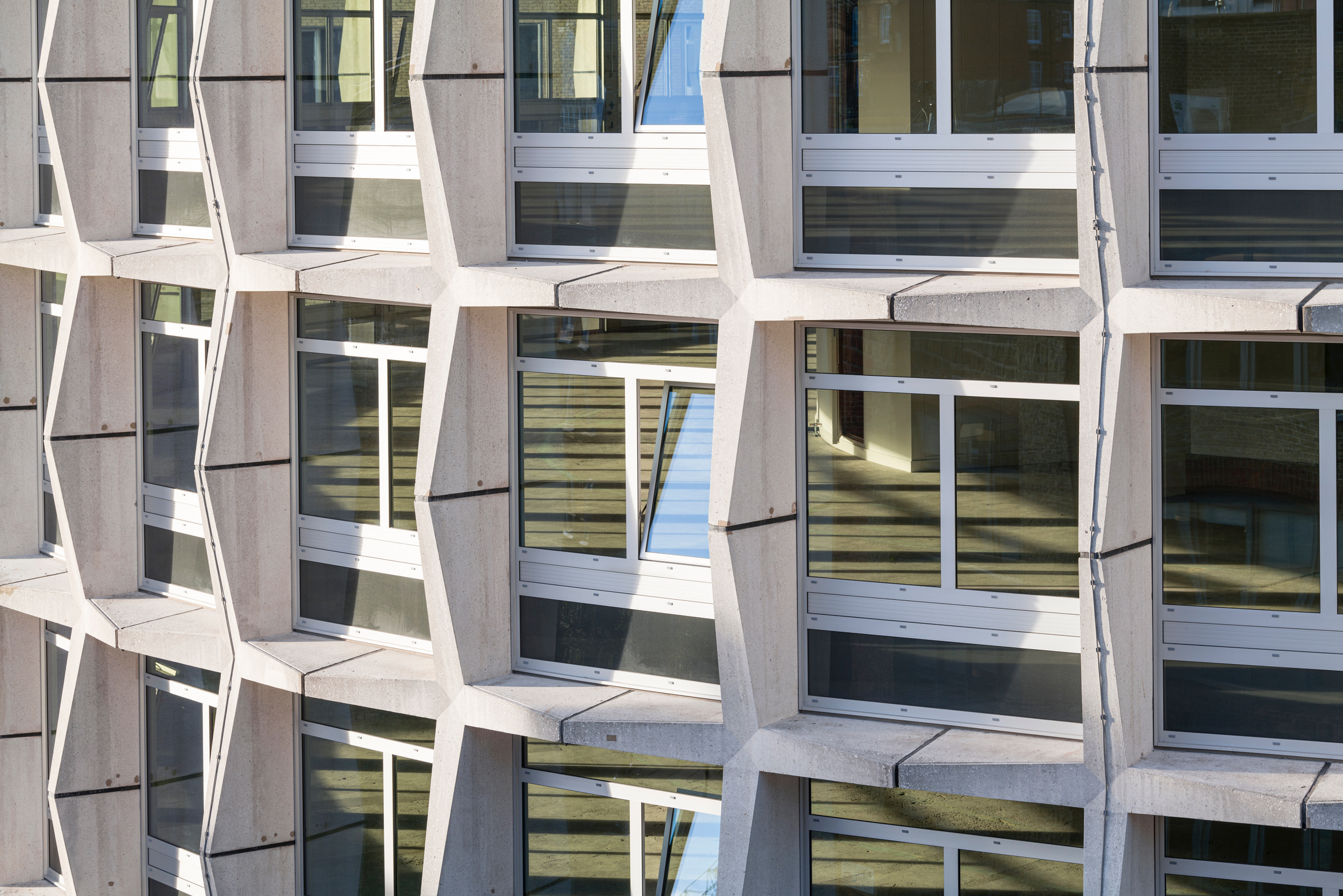 Richard Seifert's London: 'Urban, modern and bombastically brutalist'
Richard Seifert's London: 'Urban, modern and bombastically brutalist'London is full of Richard Seifert buildings, sprinkled with the 20th-century architect's magic and uncompromising style; here, we explore his prolific and, at times, controversial career